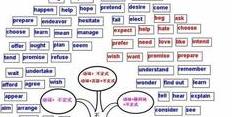一、动词不定式和动词不定式短语区别?
1、动词不定式是“to+动词原形”,其中的动词后面不直接跟宾语。例如:
to come, to go, to live, ……
例句:He didn't want to come.
2、动词不定式短语是“to+动词原形+逻辑宾语/状语…”。
例如:
to borrow my bike
to write a composition
to study hard
……
例句:
1、Alice came here to borrow my bike.
to borrow my bike是不定式短语作目的状语。
2、I have no time to help you.
to help you是不定式短语作定语,修饰其前面的名词。
3、The teachers often ask us to study hard.
to study hard是不定式短语作宾语补足语。
二、动词不定式的7种结构及例句?
①
我们从时态形式和意义来看,动词不定式有以下四种表现形式
to do sth(原形不定式),to have done sth(完成不定式),to be doing(进行不定式)to have been doing(完成进行不定式)。
动词不定式的一般式:to do sth
——所表示的动作或状态,发生在其前的谓语动词所表示的动作或状态:同时(同时)、其前(过去)、其后(将来)
He is said to know French. (同时,动作)
He seems to be sick. (同时,状态)
动词不定式的完成式:to have done sth
——表示的动作或状态,在其前谓语动词表示的动作或状
I remember to have seen him twice. 我记得曾经看见过他两次。
He is said to have been married. 据说他已经结婚了。
动词不定式的进行式:to be doing
——仅表示与其前的谓语动词表示的动作或状态是同时发生、同时进行或同时存在。
I find him to be writing a letter. 我发觉他正在写信。
They are said to be rehearsing in the auditorium. 据说他们正在礼堂排演节目。
②
动词不定式用法归纳
动词不定式没有人称和数的变化,在句中不能独立作谓语。
但动词不定式具有名词、形容词和副词特征,在句中可以作主语、宾语、宾语补足语、定语、表语和状语等多种成分。
另外,动词不定式具有动词特点,可以有自己的宾语和状语,组成动词不定式短语。
动词不定式的肯定形式是to+do;其否定形式是notto+do。
下面以动词不定式在句中的作用来予以详细说明。
1、 作主语
可以直接作主语。
如: Toseeistobelieve.但在英语中,常用it作形式主语,真正的主语即动词不定式放在后面。
如: It'swrongtoplaytricksonotherpeople.It'sourdutytokeepourenvironmentcleanandtidy. 规律:动词不定式在句中作主语时,常放在Itis +adj.(形容词)+todo sth.或 Itis+n.(名词)+todosth.it仅作形式主语。
2、作宾语want,decide ,agree等动词后面跟并且只能跟不定式。
如: Weagreedtostartearly.Shewantsto beadoctor.而love,like ,begin,start,hate ,prefer等词后面可以接不定式,还可以接动名词,意思无很大区别。
提示:likedoing指经常性动作,而liketodo指一次性的动作。
如:Ilikeswimming, butIdon'tliketoswimnow.我喜欢游泳,但我现在不想游。
特别注意:stop,forget,remember,go on ,try等词或短语后面可以接不定式。
但后面接不定式和接动名词意思大不相同。
如:1)stoptodosth.停止一件事,去做另一件事。
Stopdoingsth.停止正在做的事。
例:Whentheteachercamein, thestudents stoppedtalking; whenhecameout,thestudentsstoppedtotalk.当老师走进来时,学生们停止说话;当老师走出去时,学生们又开始说话。
2、思考:forget,remember,go on,try等词或短语后面接不定式和动名词用法有何区别?
在find/feel+it+adj.+to dosth.句型中,it是形式宾语,真正的宾语是后面的动词不定式。
如: Themandownstairsfounditdifficulttogettosleep.Ifeelit easytorecitethetext.
3、作宾语补足语
tell,ask,want,order,teach,invite,warn,wish,help,get,wish,help等词后面常接不定式作宾补。
如: Itellhimnottogotherebybus .Edison'smothertaught himtoreadandwrite.
let,make,have,see,hear,feel,watch, notice后面接不带to的不定式作宾补。
如:The bossmakesthemwork16hoursaday.Iheardhersinginthenext room. 提示:若变成被动语态,在上述结构中,不定式符号to要加上。
如: Theyaremade to work16hoursadaybytheboss.Shewasheard to singinthenextroom.
4、作定语:放在被修饰的名词、代词后面 . 例:Ihavealotofworktodo.The doctorsaidhecoulddonothingtohelpthe boy. 规律:动词不定式若在句中作定语,常放在被修饰的名词、代词之后。
提示:如果动词不定式和前面所修饰的词构成动宾关系,若动词是不及物动词,切记不要忘掉介词。
如: Ihaveasmallbedroomto livein.Haveyougotsomepenstowritewith?
5、 表语:放在连系动词be后面 .例:Hiswishistobecomeascientist.The firstimportantthingistosavethesoldiers'lives.当务之急是抢救战士们的生命。
规律:动词不定式在句中作表语时,通常对连系动词前面的名词进行诠释说明。
6、 作状语
目的状语:放在go,come,use,live,in order等词后面。如:Icometoseeyou.Herunsfastinordertogetthereintime.
原因状语:放在sorry,glad,surprised,disappointed,excited等词后面。如:Iamglad toseeyouhere.Iamsorrytotroubleyou.
作结果状语。如: Someoftheapplesarehardtoreach.Theroomislargeenoughtohold1000people.
7、与what,who,whose,when,where, how等疑问词连用,作宾语、宾语补足语、主语等。
如: Idon'tknowwhattodonext.(宾语)Hetaughtushowto usethecomputer.(宾语补足语)It'sstillaquestionhowtogetthere.(主语)
三、不定式短语是什么意思?
不定式短语主要是to,如attend to, like to 等等,是固定搭配
四、写出十个含有不定式的句子,并标明不定式在句中起的作用?
1、It is difficult to answer this question.
解析:不定式在这里做主语,it做形式主语。
2、I find it hard to answer this question.
解析:it在这里做形式宾语,to do不定式在这里做真正的宾语。
3、My job is to answer these questions.
解析:to do 不定式在这里做be动词后的表语。
4、I have a lot of questions to answer.
解析:不定式在这里做后置定语,修饰questions。
5、He was forced to answer this question.
解析:to do不定式做宾语补足语。
6、He got up early to catch the early bus.
解析:to do不定式做状语。
7、To be honest, I can't answer this question.
解析:to do不定式做独立成分。
8、I haven't decided when to go.
解析:疑问词➕to do 不定式结构。
9、I am too happy to answer the question.
解析:too...to结构,表"太...而不能"。
10、The book is easy to read.
解析:to do不定式在这里主动表被动。
五、10 英语中什么叫不定式?
英语中的不定式是非谓语动词的一种,“非谓语”意为不做谓语,其形式是“to +动词原形”。
不定式虽不能做谓语,但它仍有谓语动词的特征,即它可以有自己的宾语和状语,不定式与自己的宾语或者状语一起构成不定式短语,如:to study hard, to play table tennis。
不定式及其短语在句中可做主语、表语、宾语、宾语补足语、定语和状语。
它也有语态和时态的变化,它还有逻辑上的主语,只是它不受该主语的人称和数的限定,即它不因其主语的人称或数而有形式上的变化。
其“不定”二字可理解为“不受限定”的意思,所以叫不定式。
六、初中常见的to do不定式的短语?
常见的短语有: tell sb. to do sth., want to do something, ask somebody to do something.
七、动词不定式的作用?
动词不定式短语在句子中的作用
(1)动词不定式短语做主语:
To master a language is not an easy thing。
掌握一门语言不是一件容易的事情。
动词不定式做主语时可以放在后面,而用 it 作形式主语放在原主语的位置上。
It's necessary to find the witness。
有必要找到目击者。
(2)动词不定式短语作宾语:
I like to help others as much as possible。
如果有可能的话,我喜欢帮助别人。
动词不定式短语作宾语补语:表示不定式的动作是由宾语发出。
We expect you to be with us.
我们希望你和我们在一起。
(3)动词+宾语+不带to的不定式作宾语补足语:感官动词:see, watch, notice, look at,hear;使役动词:make, let, have(使得),help(可带to, 也可不带to)
The teacher has his students write a composition every other week。
老师让同学们每隔一周写一篇作文。
(4)动词不定式短语作表语:
The most urgent thing is to take legal measures immediately。当务之急是马上采取法律措施。
(5)动词不定式短语作定语:
There are many ways to solve the problem. 有许多方法能解决这个问题。
(6)动词不定式短语作状语:经常表示目的。
We went to the hospital to see our teacher. 我们去医院看了我们的老师。

